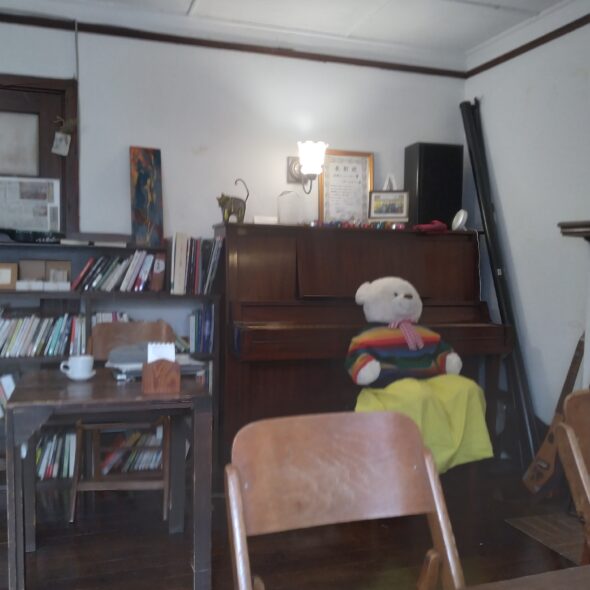
A cozy corner of the Bazaar Cafe, just to the right of the front counter, and to the left of the stone fire place.
At the Bazaar Cafe, I spent most of my time washing dishes and putting dishes away. When things were less busy, which happened semi-frequently, I was assigned to recycle old containers, or clean trays that had been used by customers. However, the unique atmosphere created by the diversity of experience, character, and age of all of the volunteers truly makes for a great group of people to work with, as well as chat with. People were very polite with me, in spite of my limited language skills, and wanted to make sure that I was comfortable during my time there. For those curious about volunteering at the Bazaar Cafe, I recommend doing your best to engage with others while on the job, and not being afraid to ask questions, whether they be work-related or not. The more you engage with the people around you in the kitchen, the more enriching your experience will feel, and the more supported you will feel in your work, and ultimately, as a member of the team.
